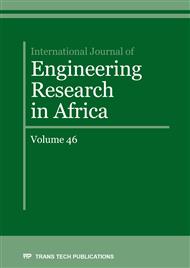[1]
Air Transport Association. http://www.airlines.org/News/Releases/ Pages/news_7-28-2011.aspx. Accessed Nov. 7, (2011).
Google Scholar
[2]
Lahey, W., and P. Heilbron. Aviation Fueling at Large Airports: Negotiating Workable Agreements Between Airlines and Airport Proprietors. Transportation Law Journal, Vol. 35, 2008, p.245–261.
Google Scholar
[3]
Lawicki, D. Jet Fuel Characteristics: Performance Engineer Operations, Flight Operations Engineering. (2002).
Google Scholar
[4]
Research and Innovative Technology Administration. http://www. transtats.bts.gov/ fuel.asp?pn=1. Accessed Feb. 2, (2019).
Google Scholar
[5]
Research and Innovative Technology Administration. http://www.bts. gov/xml/fuel/report/ src/tableversion.xml. Accessed Feb. 2, (2019).
Google Scholar
[6]
International Air Transport Association. http://www.iata.org/whatwedo/economics/ fuel_monitor/Pages/ price_ analysis.aspx. Accessed Feb. 2, (2019).
Google Scholar
[7]
Ali Zockaie, Hani S. Mahmassani Leveraging Fuel Cost Differences in Aircraft Routing by Considering Fuel Ferrying Strategies, Transportation Research Record Journal of the Transportation Research Board 2012, pp.139-146.
DOI: 10.3141/2300-16
Google Scholar
[8]
Babic, O. Optimization of Refueling Truck Fleets at an Airport. Transportation Research Part B, Vol. 21, No. 6, 1987, p.479–487.
DOI: 10.1016/0191-2615(87)90042-7
Google Scholar
[9]
Sölveling, G., S. Solak, J. B. Clarke, and E. L. Johnson. Scheduling of Runway Operations for Reduced Environmental Impact. Transportation Research Part D, Vol. 16, 2011, p.110–120.
DOI: 10.1016/j.trd.2010.09.004
Google Scholar
[10]
Catalanotti, E., K. J. Hughes, M. Pourkashanian, I. Uryga-Bugajska, and A. Williams. Development of a High Temperature Oxidation Mechanism for Bio-Aviation Fuels. Proc., American Society of Mechanical Engineers International Mechanical Engineering Congress and Exposition, Vol. 3, 2009, p.321–330.
DOI: 10.1115/imece2008-68667
Google Scholar
[11]
Barnhart, C., N. L. Boland, L. W. Clarke, E. L. Johnson, G. L. Nemhauser, and R. G. Shenoi. Flight String Models for Aircraft Fleeting and Routing. Transportation Science, Vol. 32, No. 3, 1998, p.208–220.
DOI: 10.1287/trsc.32.3.208
Google Scholar
[12]
Stroup, J. S., and R. D. Wollmer. A Fuel Management Model for the Airline Industry. Operations Research. Vol. 40, No. 2, 1992, p.229–237.
DOI: 10.1287/opre.40.2.229
Google Scholar
[13]
Abdelghany, K., A. Abdelghany, and S. Raina. A Model for the Airlines' Fuel Management Strategies. Journal of Air Transport Management, Vol. 11, 2005, p.199–206.
DOI: 10.1016/j.jairtraman.2004.10.002
Google Scholar
[14]
Singh V., S. K. Sharma and S. Vaibhav. Identification of Dimensions of the Optimization of Fuel Consumption in Air Transport Industry: A Literature Review. Journal of Energy Technologies and Policy. Vol.2, No.7, 2012, pp.24-33.
Google Scholar
[15]
Singh V., and S. K. Sharma. Fuel consumption optimization in air transport: A review, classification, critique, simple meta-analysis and future research implication. European Transport Research Review. Vol. 7, No. 2, 2015, pp.7-12.
DOI: 10.1007/s12544-015-0160-x
Google Scholar
[16]
Okafor, E.G., O.C. Ubadike, N.H. Anene, K.O. Uhuegho and M.A. Soladoye. Study of fleet assignment problem using a hybrid technique based on Monte carlo simulation and Genetic algorithm. Nigeria Journal of Technology, Vol. 38 No. 3, 2019, pp.756-762.
DOI: 10.4314/njt.v38i3.30
Google Scholar
[17]
Okafor E.G., Y-C. Sun and Z. Lu Safety assessment of an aircraft on board inert gas generating system: Recent Patent on Engineering Vol. 6, 2012, pp.70-79.
Google Scholar
[18]
Okafor EG., Uhuegho K.O., Sun Y-C., Multi-Objective Optimization of an Aircraft Position Indicator and Actuation System (PIAS) using GPSIA+DS: Recent Patent on Engineering Vol. 10, 2016, pp.51-68.
DOI: 10.2174/1872212109666150917011547
Google Scholar


